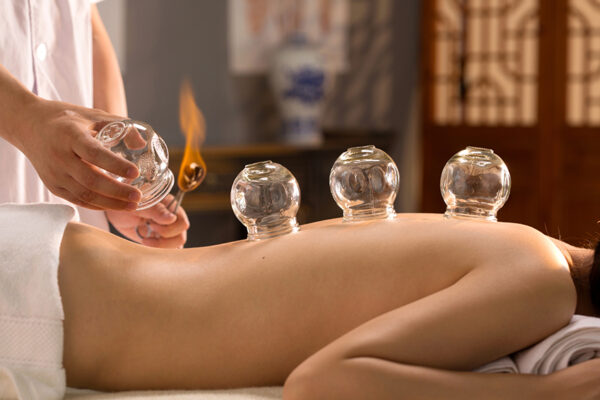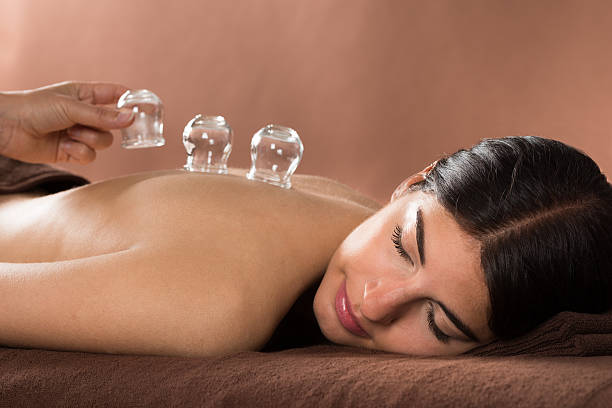What is Cupping?
Cupping is a healing modality that uses suction to move fluids and energy (Qi) from inside the body out towards the surface. It encourages improved circulation in a particular area. Cupping stretches the fascia and muscles to release tension. It promotes detoxification by pulling fluids toward the surface.
Many healing traditions do cupping, primarily in Asian, Eastern European, and Middle Eastern cultures. In China, the documented use of cupping for medical purposes goes back 3000 years.

How does it work?
There are two main types of cupping. Most common is Fire Cupping: a flame is lit inside a glass, which burns oxygen to create negative pressure. Then the cup is quickly placed against the skin. Another type is Vacuum Pump Cupping, where a pump pulls air out of a plastic cup. A lotion is applied first to help with cup attachment.
There are four main techniques. The primary technique is Stationary Cupping; a cup is firmly attached to one area for 10-15 minutes. Another technique is Sliding Cupping; cups are moved along both sides of the spine or across the shoulders. Third is Flash Cupping; a cup is attached and quickly popped off. Finally, there is Wet Cupping, where are lancet is used to pierce the skin before attaching a cup. This draws out blood and is helpful for detoxification and muscle pain. Wet cupping is not done during a typical cupping appointment but can be done upon request.
Cupping for Myofascial Release
The word ‘myofascial’ has two parts. ‘Myo’ means muscle and ‘fascial’ means fascia. Fascia is a network of elastic tissues running through your body. Every muscle has an outer sheath of fascia. This stretchy coating cushions impact and allows muscles to glide over each other. Microscopically, fascia is composed of a three-dimensional network of stretchy fibers. When your fascia is healthy, it is soft and flexible. But when you have an injury, long periods with poor posture, repetitive motion, poor nutrition, or high stress, fascia can become tough and inflexible. Tight fascia can cause pain, reduced range of motion, and lead to damage of your muscles, joints, and tendons.
Similar to the Myofascial Release massage technique, cupping provides a sustained stretch of the fascia. The long gentle stretch provided by cupping gives time for nutritive fluids to flow into the opened spaces and elongates the fibers.
When working on tight muscles, it helps to think of muscles and fascia like rubber bands. When you stretch them occasionally, they’ll quickly return to their tight position. It’s only when you release tension frequently and improve circulation that you can make lasting changes.
Are there any side effects?
Those round cupping marks you may have seen in pictures are very common. The marks may last about a week, but they are nothing to worry about and typically don’t hurt. It is possible to get a blister from cupping, although it is extremely rare. Do not pop the blister and keep it clean.

Recommended Course of Treatment
| Service | Price | Duration |
|---|---|---|
| Cupping Session | $40 | 30 Minutes |
| Acupuncture + Cupping | $105 | 90 Minutes |
